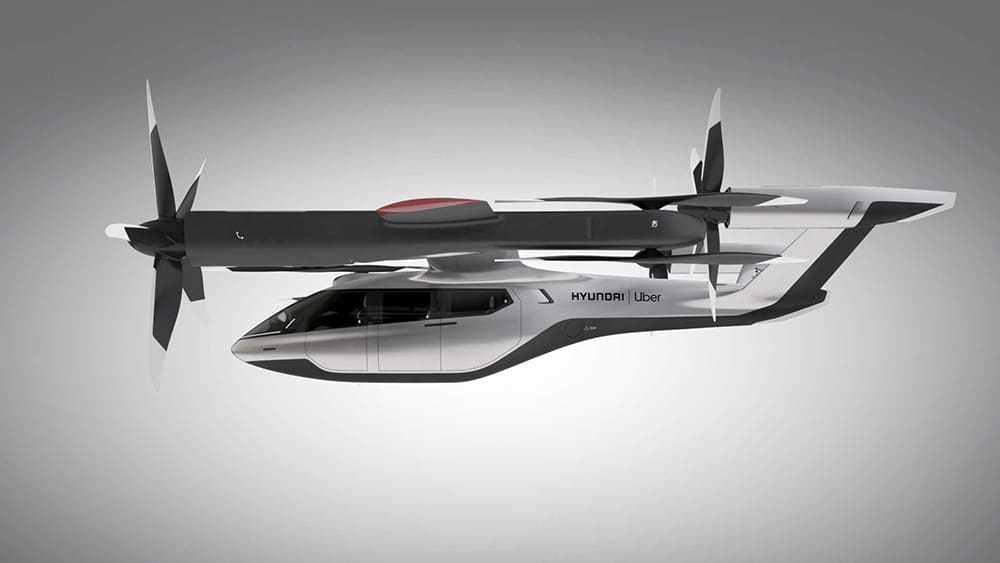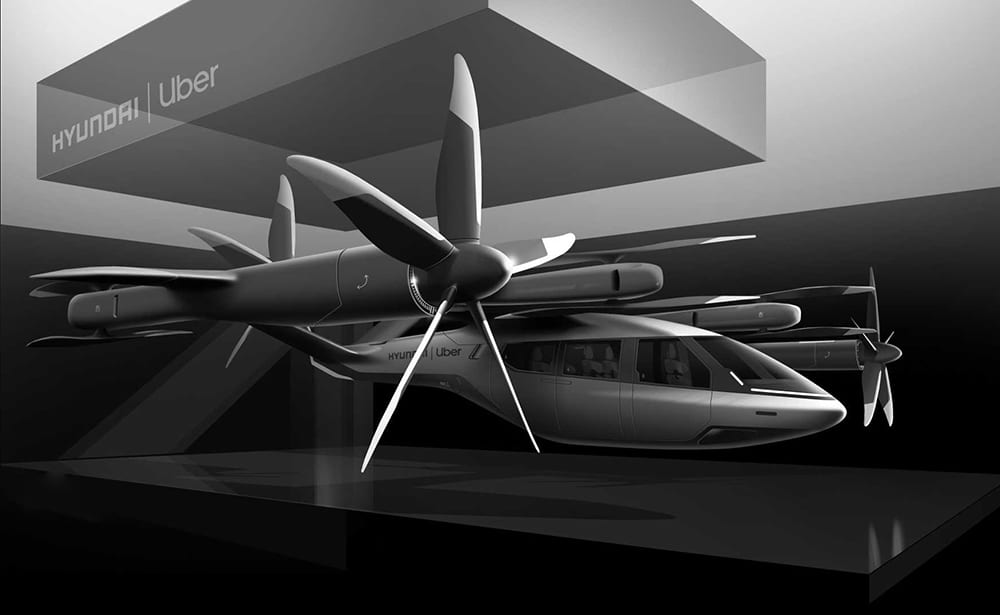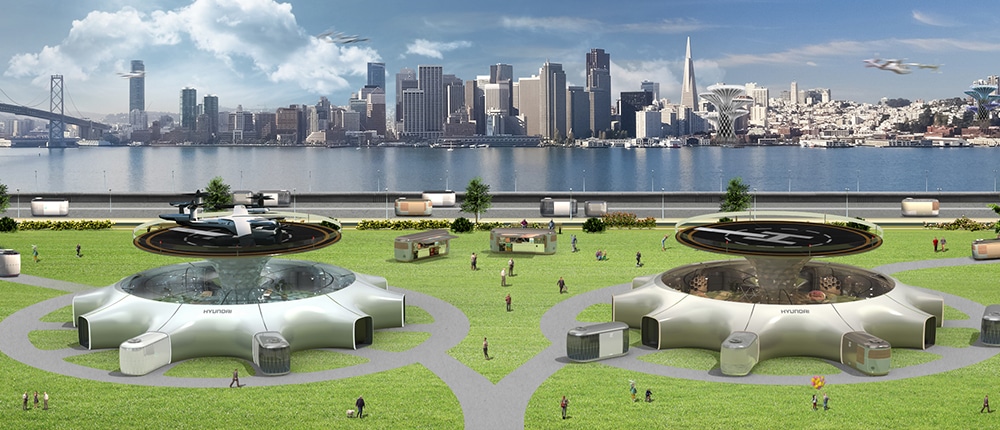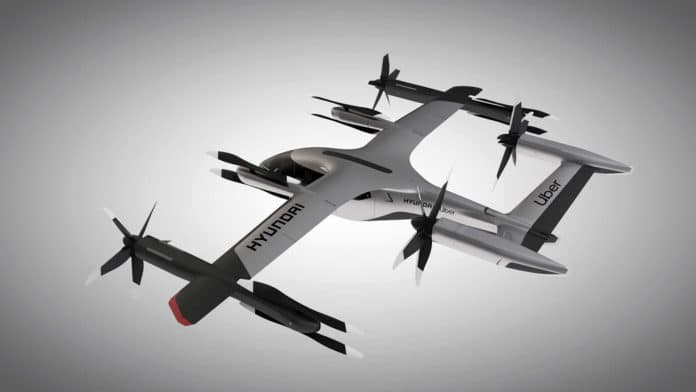The South Korean car manufacturer Hyundai, as promised earlier, has unveiled its first flying car at CES 2020 in Las Vegas. The company has also announced an agreement with the US shared travel firm Uber to collaborate in the creation of an air taxi system.
Under this agreement, it will produce flying devices for Uber, which intends to launch a network of shared air taxis in 2023. The automaker will develop a four-seat electric flying taxi model while Uber will manage the service and its infrastructure.

The fully electric tiltrotor, named ‘S-A1’, is designed for cruising speeds of up to 290 km/h (180 mph) and flight altitude of around 1,000-2,000 feet (300 – 600 m) above ground, capable of flying up to 100 km (60 miles) without recharging and taking on board up to four people. This electric vertically take-off and landing device will be piloted initially, but over time they will become autonomous.
Utilizing distributed electric propulsion, Hyundai’s electric aircraft will require about five to seven minutes for recharging during peak hours. The multiple rotors and propellers around the airframe increase safety by decreasing any single point of failure. Besides, it has several smaller rotors that reduce noise relative to large rotor helicopters with combustion engines, which is very important to cities.

In turn, Uber has committed to developing the infrastructure necessary for the operation of the new taxi system. Accordingly, the company will have a fair fight with the bureaucracy: at present, any air flights, especially over cities, are associated with many restrictions. In addition, Uber plans to create and adapt runways, passenger drives, and other infrastructure components for a specific Hyundai airplane, i.e., in essence, to develop miniature airports.
Hyundai’s second mobility solution for a dynamic human-centered future is the Purpose Built Vehicle (PBV) that can accommodate a wide spectrum of future lifestyles with limitless personalization. PBVs can function as a restaurant, coffee shop, and hotel, or even a clinic and pharmacy, in addition to being an urban shuttle.

Its third concept is the Hub, an innovative new community space that connects air-based UAM (Urban Air Mobility) and ground-based PBV.
